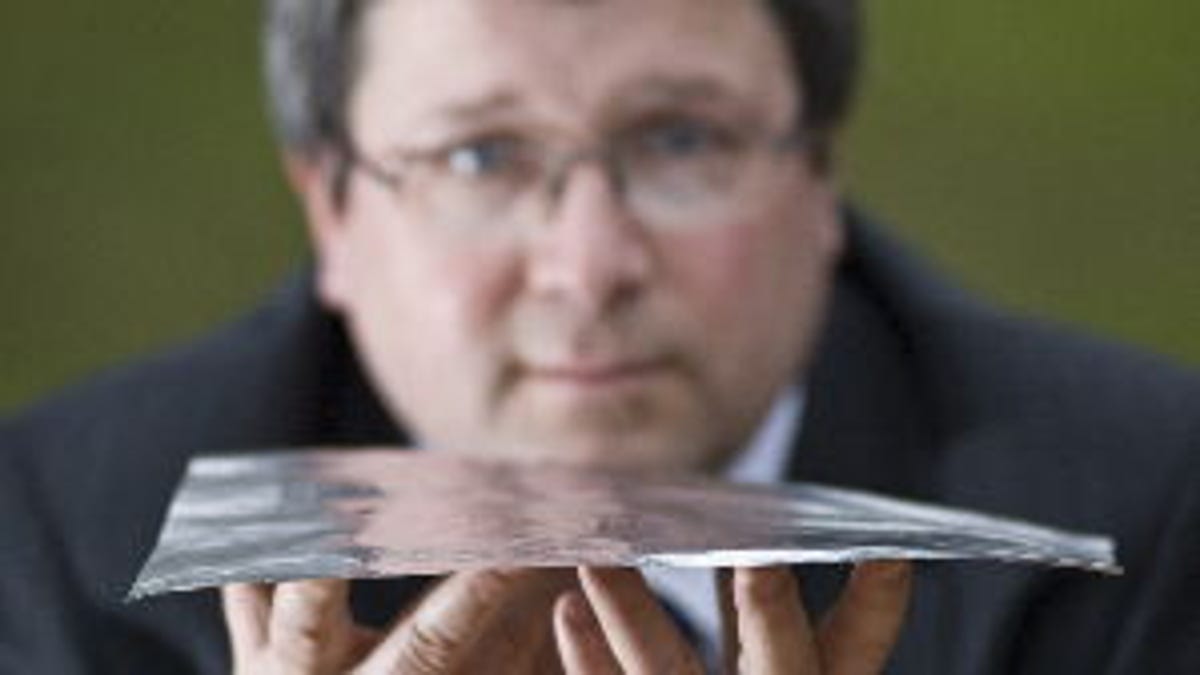Flat, flexible speakers could make walls speak
New loudspeakers out of the U.K. are less than a quarter of a millimeter thick and can be hung on walls like pictures to make announcements in public places.

When I told CNET audio editor Donald Bell about the Flat, Flexible Loudspeaker out of the U.K.'s University of Warwick, he immediately imagined subway posters shouting at him. And he's probably not too far off.
The new loudspeakers are less than a quarter of a millimeter thick and can be hung on walls like pictures to make announcements in places such as passenger terminals.
They're so slim and flexible, engineers say the speakers could even be concealed inside ceiling tiles or car interiors, conceivably leading to talking roofs, wallpaper, or car seats.
The speakers were pioneered by Warwick Audio Technologies, a University of Warwick spin-out company. Engineers say the flat loudspeakers are ideal for public spaces because they deliver planar directional sound waves, which project further than sound from conventional speakers.
Speakers work by converting an electric signal into sound. Usually, the signal is used to generate a varying magnetic field, which in turn vibrates a mechanical cone, so producing the sound.
The technology behind the FFL assembles thin conducting and insulating materials, resulting in the development of a flexible laminate. When activated by an electrical signal, the laminate will vibrate and produce sound.
The developers say the speaker laminate operates as a perfect piston resonator. The entire diaphragm therefore radiates in phase, forming an area source. The wave front emitted by the vibrating surface is phase-coherent, producing a plane wave with very high directivity and very accurate sound imaging. Translation: crisp, clear sound in big, noisy spaces.
Warwick Audio Technologies is currently in negotiations with a number of commercial partners and expects to launch its first commercial product later this year.

